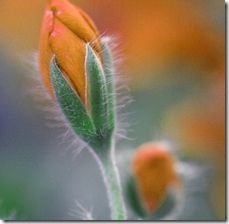Geraniums are reliable plants grown as annuals in most parts of the country. They begin flowering in late spring and continue providing gardens with color until the first frost of fall. As the University of Rhode Island notes, "Pest problems are minimal with geraniums." However, there are several garden invaders that can ruin your geranium blooms. While some of these pests cause only cosmetic damage, others can stunt plant growth and even cause plant death.
Aphids
-
Aphids are among the most common invaders of geraniums. These small insects have long, narrow mouthpieces that can pierce the leaves, stems and buds of geranium plants, draining them of their internal fluids. Low numbers of aphids don’t damage the plants and even can go unnoticed, but larger aphid infestations can cause leaves to curl and discolor. Common aphid types that feed on geraniums include melon aphid and green peach aphid. Neem oil, narrow-range oil and insecticidal soap all can be beneficial for controlling aphid populations. For best results, mix the material you choose with water and spray the mixture thoroughly on the tops and undersides of geranium leaves.
Mites
-
Like aphids, mites are pests that can cause aesthetic damage to geraniums; they are so tiny that they are hard to see. Mite infestation symptoms include leaves developing light-colored dots and a bronze or yellow discoloration. In severe cases, leaves can drop from the plants and mites can cover plant parts with webbing. Unlike aphids, mites are arachnids, the same class that includes spiders. One common type of mite that preys on geraniums is the two-spotted spider mite. To eliminate mites from geraniums, you can spray them with a hard blast of water every few days, which disrupts mite reproduction or you can treat your geraniums with a miticide, which is a chemical pesticide for mites.
Caterpillars
-
Caterpillars are the larvae of butterflies or moths. Some of the species that feed on geraniums include variegated cutworm, bollworm, geranium plume moth and the geranium — or tobacco — budworm. Caterpillars can cause extensive damage to geraniums by chewing holes in their blossoms and leaves, as well as devouring entire buds, flowers, leaves, shoots and seedlings. Unlike aphids and mites, caterpillars can stunt plant growth and kill plants. To control caterpillar populations, you can remove caterpillars by hand, remove adjacent weeds, treat geraniums with the bacteria Bacillus thuringiensis, Bt, or use a combination of these actions.
Whitefly
-
Whiteflies are small, winged insects that are covered with a white wax. Like aphids, the whiteflies feed on the internal fluids of geranium plants. Symptoms of a whitefly infestation are dry leaves, yellowed leaves or dropping leaves. Common varieties of whitefly that feed on geraniums include giant whitefly, greenhouse whitefly, banded-winged whitefly and sweet-potato whitefly. While pesticide oils and soaps can reduce whitefly populations, they will not eliminate them. For best results, remove infected leaves by hand, spray the geraniums with water and/or vacuum the geraniums with a small, hand-held vacuum cleaner.
Slugs
-
Slugs are slow-moving, slimy gastropods that can feed on the leaves and seedlings of geraniums. To get rid of them, set out saucers filled with stale beer in the garden, as North Carolina State University recommends. The slugs will be attracted to the beer, climb inside and drown. Alternatively, you can control slug populations by putting diatomaceous earth on the soil surrounding geraniums or trap them under flat boards or newspapers.
Subterranean Termites
-
Subterranean termites are ground-dwelling termites that feed on the stems of plants, including geraniums. The termites can cause geraniums to yellow, wilt and die. The determined pests can even infiltrate geraniums that are growing in planters and pots. To protect geraniums from subterranean termites, apply a specialized termite pesticide, known as a termiticide.


Deprecated: strpos(): Passing null to parameter #1 ($haystack) of type string is deprecated in /home/agriviek8Qv/agriviet.net/public_html/wp-includes/comment-template.php on line 2522